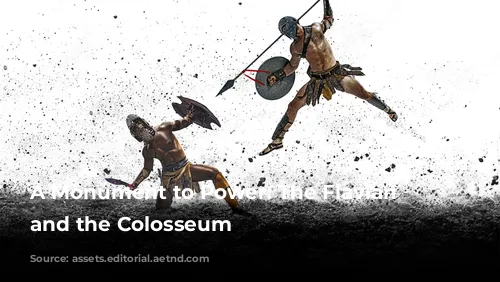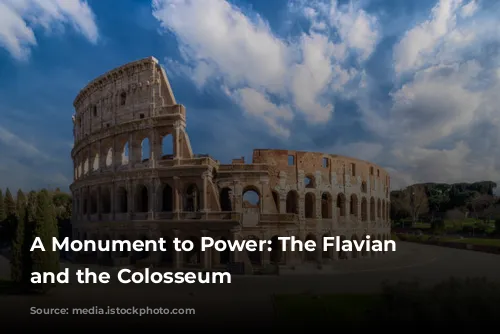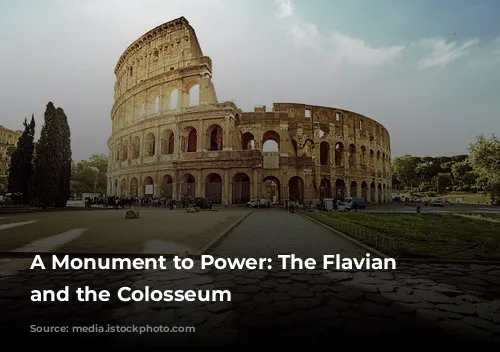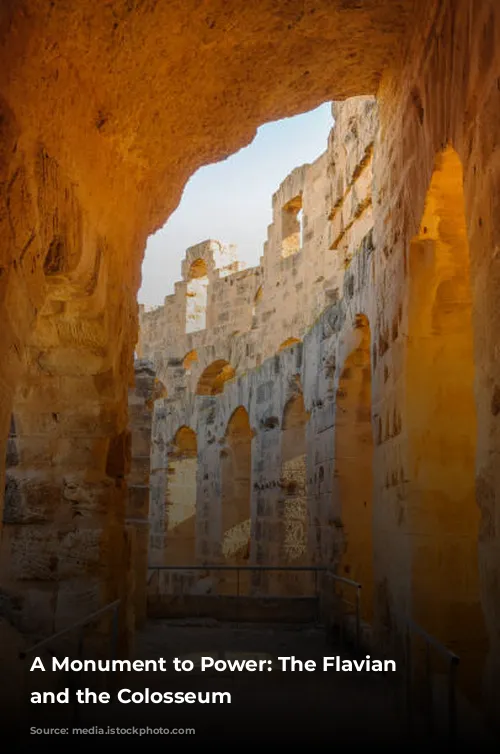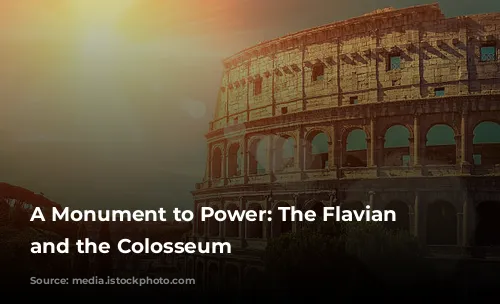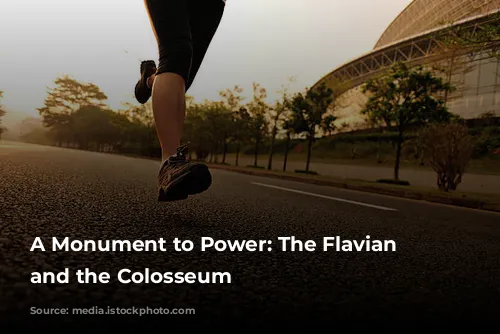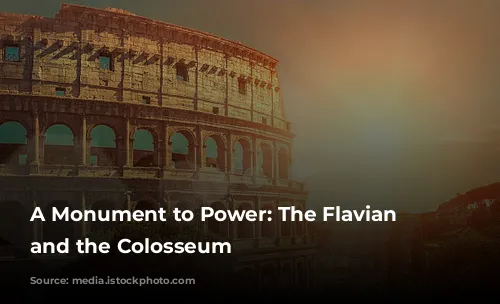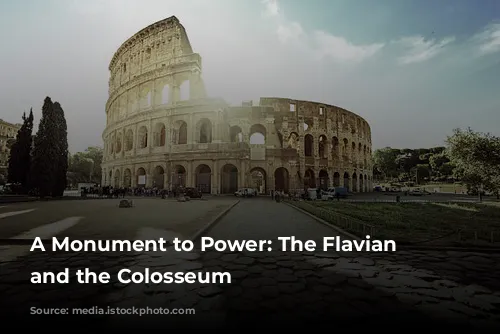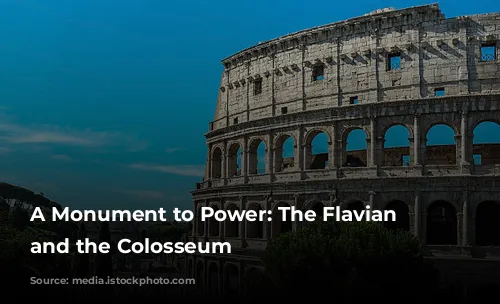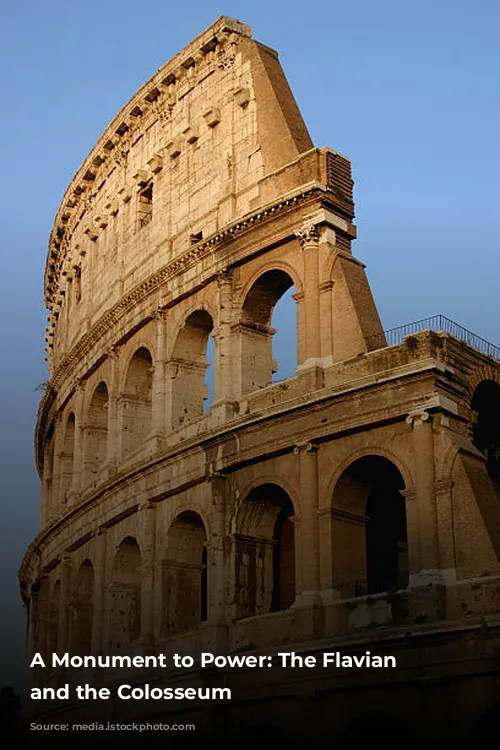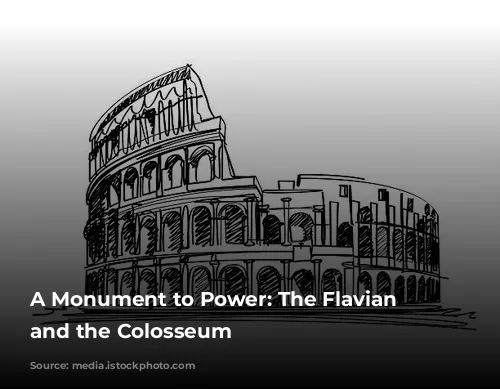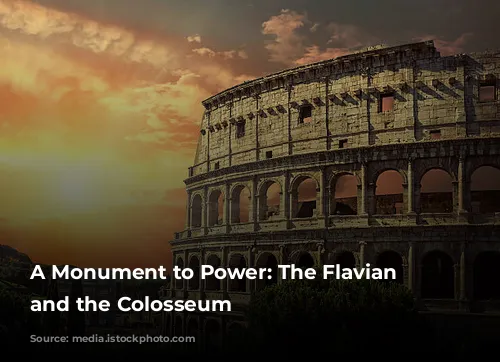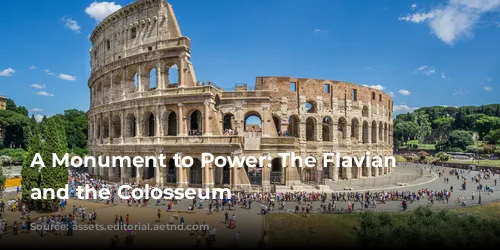The Colosseum, better known as the Flavian Amphitheater, stands as a majestic testament to the grandeur of the ancient Roman world. This iconic structure, built in the first century A.D., is not only a breathtaking feat of architecture and engineering but also a poignant symbol of Roman power and societal hierarchy.
The Flavian Dynasty and a City Reborn:
Following the reign of Nero, Rome lay in ruins, scarred by fire, plague, and civil war. When Vespasian ascended to the throne in 69 A.D., he and his sons, Titus and Domitian, embarked on a monumental rebuilding program. This ambitious project, known as the Flavian Dynasty, saw the restoration of countless buildings, statues, and monuments, transforming the city into a symbol of renewed power and prosperity. One of the most striking achievements of this dynasty was the construction of the Colosseum, a grand amphitheater designed to be a centerpiece of the revitalized Rome.
Funded by the spoils of war, specifically the riches plundered from the siege of Jerusalem during the First Jewish-Roman War, the Colosseum became a tangible representation of Roman dominance and a dramatic symbol of the city’s resurgence.
A Monument of Innovation:
The Colosseum, the largest and most complex permanent amphitheater of its time, was a marvel of engineering. Built primarily of concrete, travertine, marble, stone, and timber, this colossal structure rose to a height of 157 feet—comparable to a 15-story building. With a capacity of up to 80,000 spectators, the Colosseum was a testament to Roman ingenuity and ambition.
The Colosseum’s use of concrete, which was groundbreaking for its time, allowed for a scale and complexity unprecedented in amphitheater construction. This innovation, combined with the structure’s deep foundation, has ensured its survival for over 2,000 years.
A Reflection of Social Order:
The Colosseum was not just a place of entertainment; it was a mirror reflecting the rigid social hierarchy of ancient Rome. The seating arrangements were meticulously designed to reflect the social standing of each spectator. The best seats, closest to the arena, were reserved for the Emperor and the elite senators. The Equestrian Order, composed of wealthy merchants, artisans, and bureaucrats, occupied the next tier. The remaining 95 percent of Rome’s population, including women, foreigners, and the poor, were relegated to the less desirable upper seats.
This meticulous organization extended to the entrance and exit of the Colosseum. Four designated entrances catered to the elite, while 76 served the general populace. Corridors and distinct seating areas reinforced the social order, ensuring that each group remained within their designated space.
The Architect’s Legacy:
The architect of the Colosseum remains shrouded in mystery, but its design undoubtedly drew inspiration from earlier structures such as Greek theaters. The Colosseum’s impressive series of columns, arches, and barrel vaults stand as a testament to the enduring influence of ancient Greek architecture.
A Stage for Spectacle:
The Colosseum was a stage for a variety of spectacles, including gladiatorial combat, animal hunts, and mock sea battles. To facilitate these dramatic events, the Colosseum was equipped with an intricate system of trap doors, pulleys, and lifts, allowing for dramatic entrances and exits, even for elephants, adding an element of surprise and awe.
The Colosseum’s sophisticated drainage system ensured that the arena floor could be easily cleaned after mock sea battles. To protect spectators from the elements, a retractable awning, operated by sailors, could be deployed to provide shade from the sun or shelter from rain.
A Lasting Impact:
The Colosseum’s influence extends far beyond its grandeur and architectural brilliance. Its innovative use of arches, its elliptical shape, and its organized seating system inspired countless modern stadiums. The Colosseum, a monument of Roman ingenuity, continues to be a source of inspiration for architects and engineers worldwide.
Conclusion:
The Colosseum stands as a monument to the power, ambition, and ingenuity of the Flavian Dynasty. It remains a testament to Roman architecture and engineering, a reminder of ancient Rome’s societal structure, and a timeless symbol of the enduring legacy of a civilization that shaped the course of Western history. The Colosseum continues to fascinate and inspire generations with its breathtaking scale, its architectural grandeur, and its enduring relevance.

